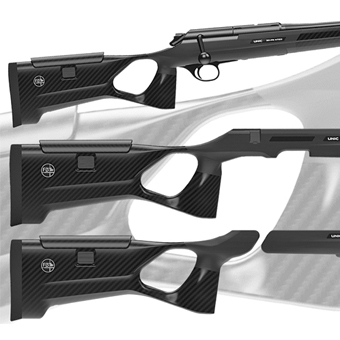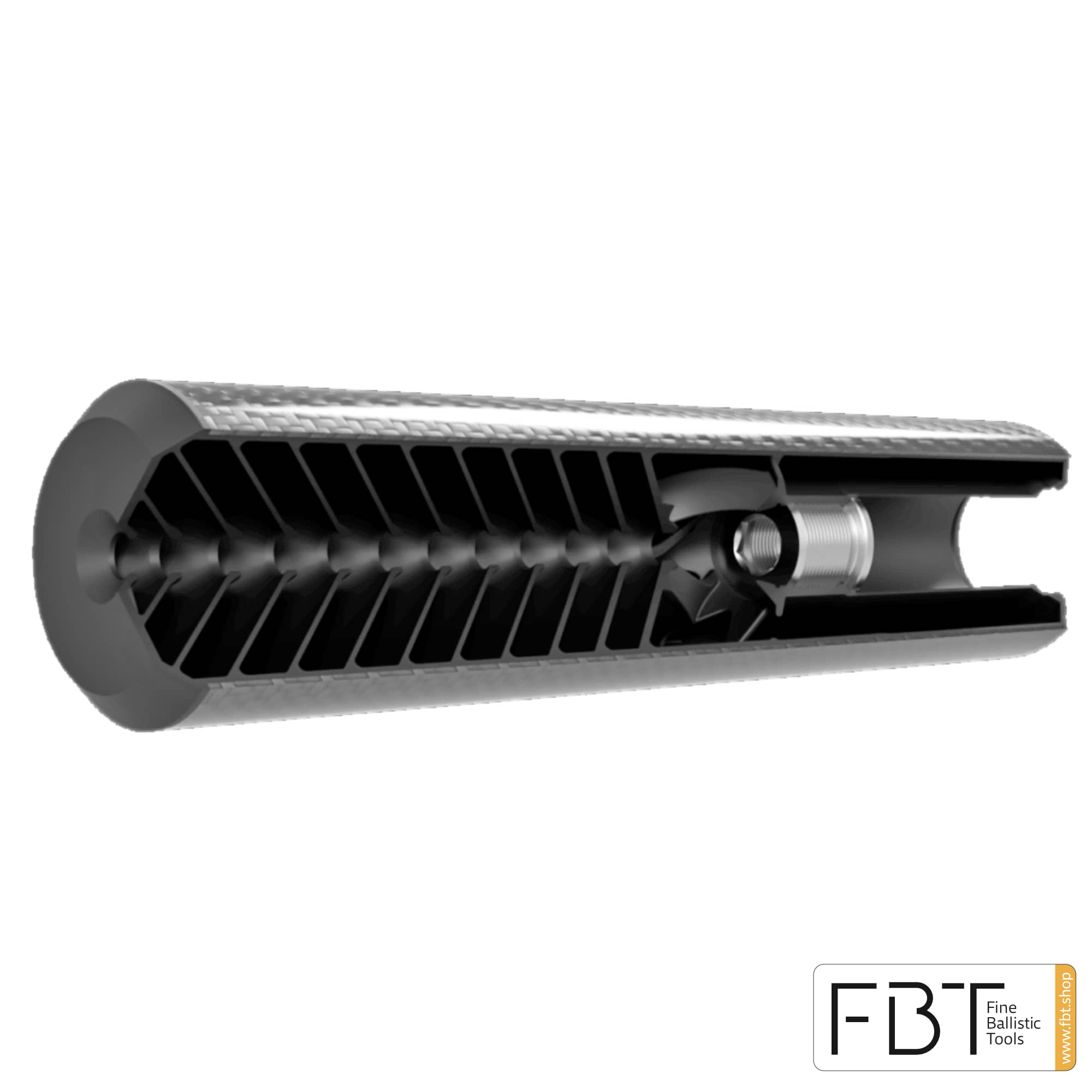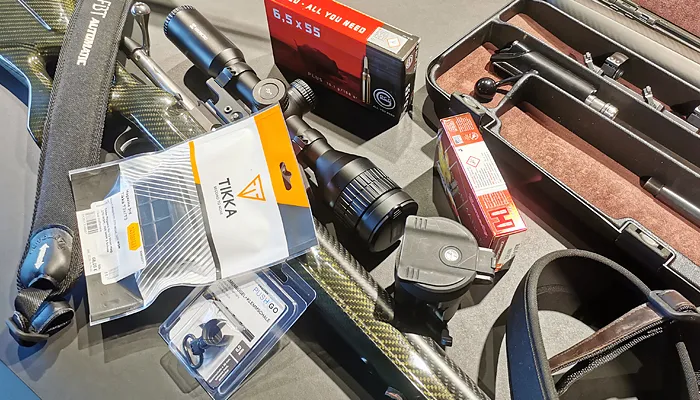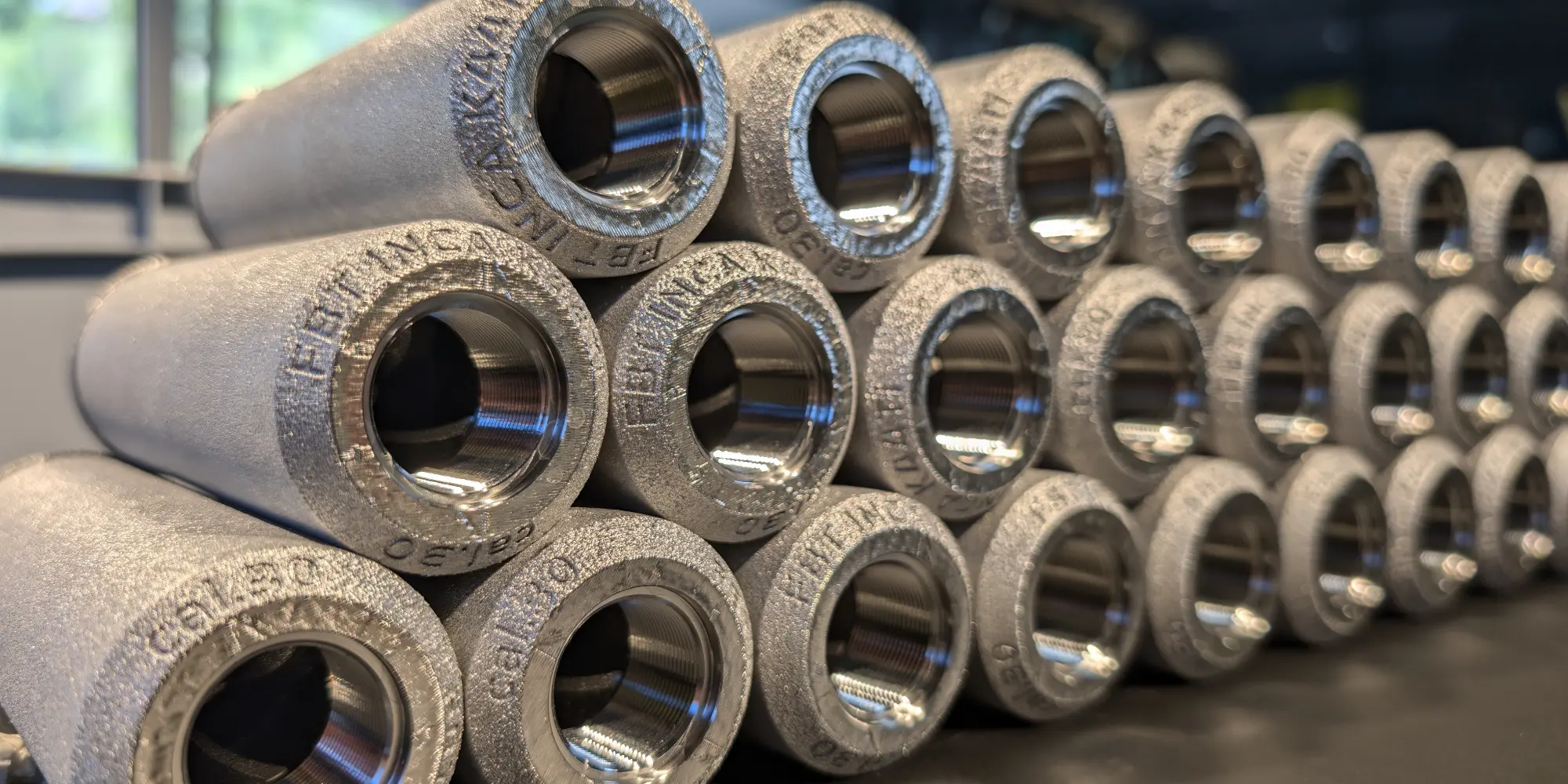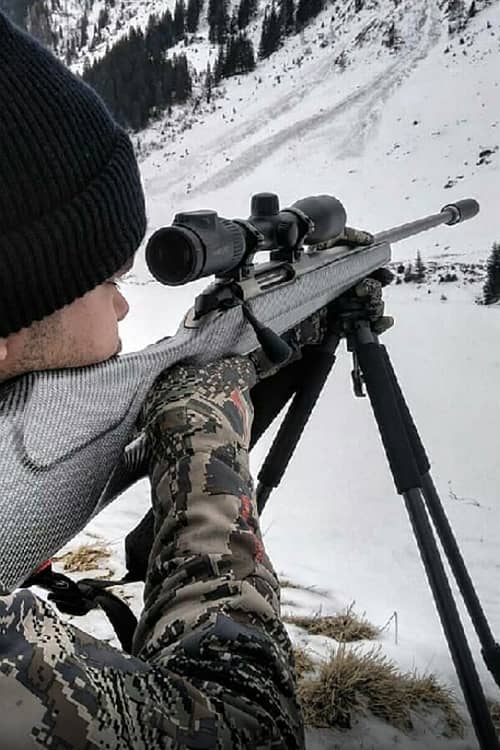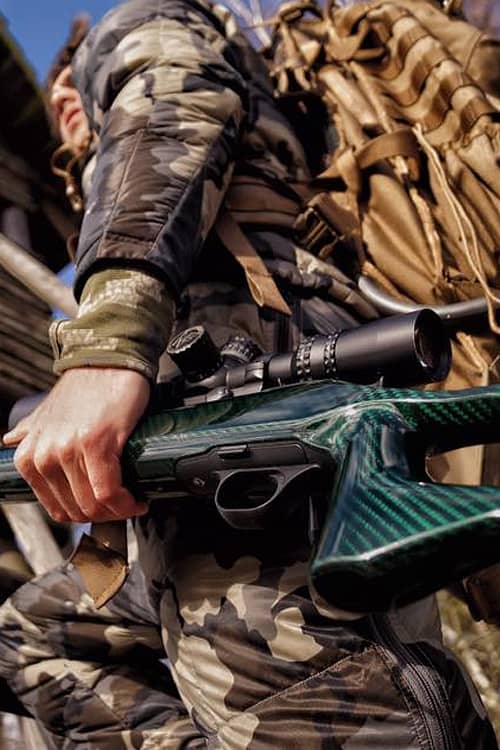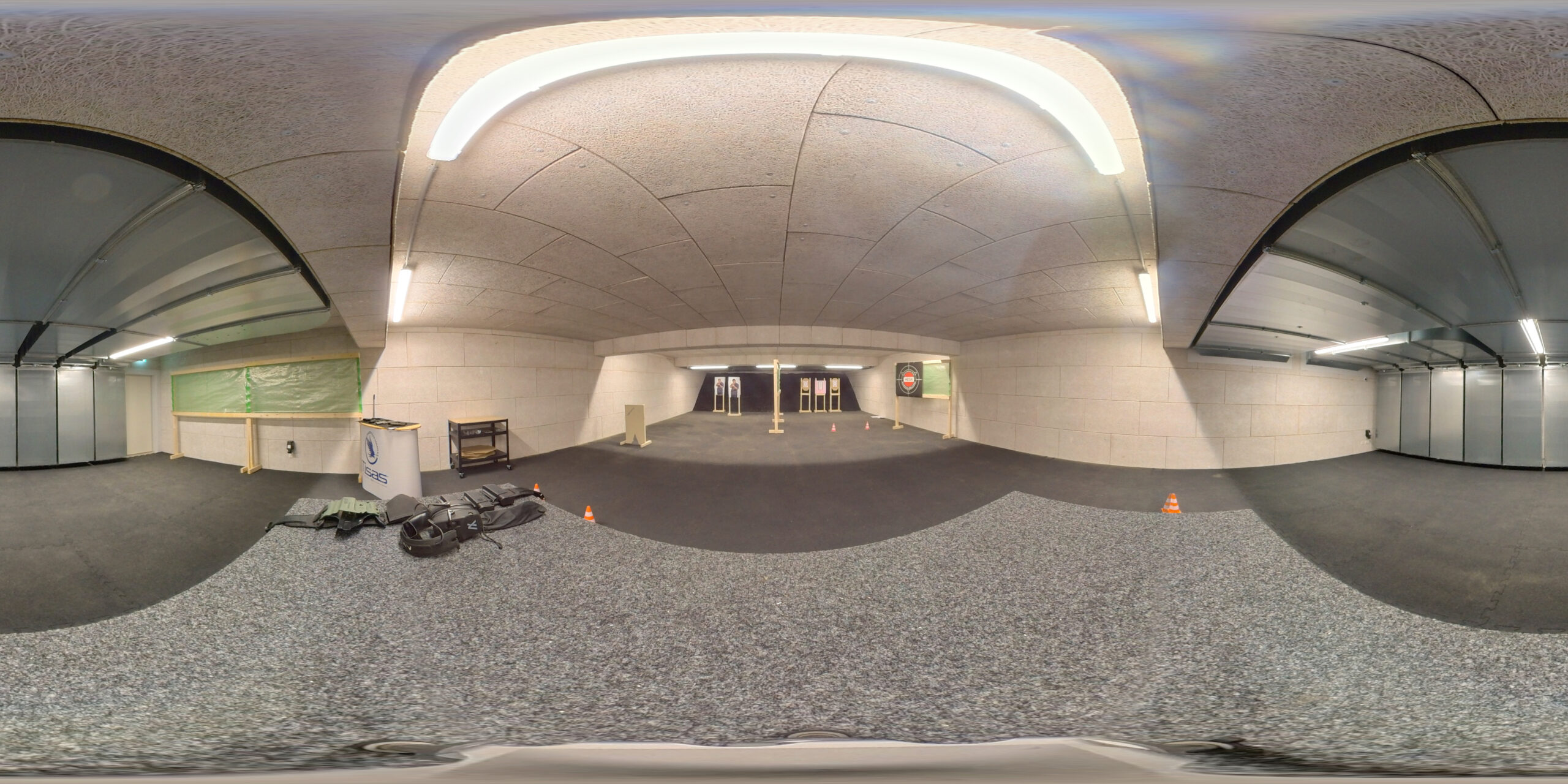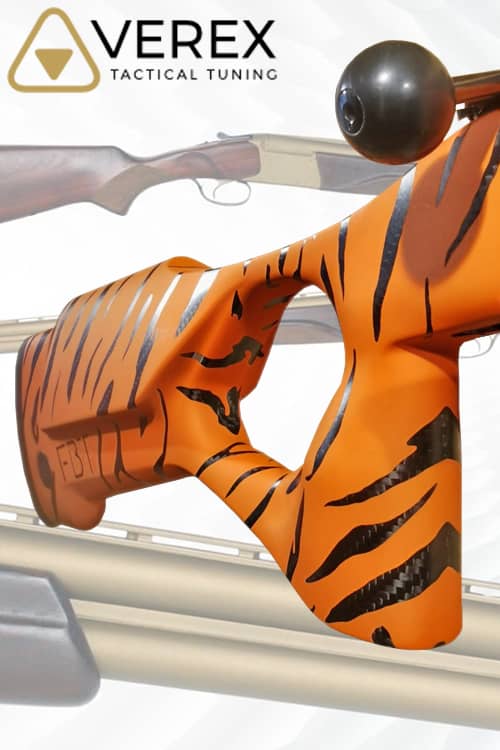Barrel vibration | Significant changes due to silencer and possible point of impact deviation
A short and crisp reminder - what exactly happens when a shot is fired?
The propellant powder is ignited in the cartridge case, whereby the gases accelerate the bullet in the barrel at high pressure. A longer barrel generally increases the muzzle velocity (depending on the type of powder), which increases the muzzle energy and thus also the effective range of the weapon.
The chemical energy of the powder is converted into the kinetic energy of the projectile.
However, as soon as the maximum gas pressure (maximum pressure) is reached, the increase in speed and energy per additional centimetre of barrel length decreases. The marginal benefit of additional barrel length can therefore be a fallacy, which is why it should be carefully weighed up in relation to powder characteristics and bullet weight (advantage for reloaders).
The time it takes for the bullet to travel through the barrel is known as the cycle time. Typical values for the cycle time are in the range of less than one millisecond.
In contrast to the rifles and handguns have rifled barrels, which have rifling and fields. These generate a twisting movement of the projectile by rotating it around its own axis.
The so-called twist provides twist stabilisation, which prevents the bullet from rolling over in flight and stabilises the trajectory.
The barrel diameter is divided into two diameters: The larger pull diameter and the smaller field diameter, which corresponds to the calibre of the weapon. The pitch of the "thread", i.e. the rifling, is referred to as the twist length.
This indicates the distance that the bullet travels in the barrel to complete a full revolution around its own axis.
A shorter twist length causes the bullet to rotate faster.
Between the grooves and fields of the barrel profile and the projectile, the high accelerations so-called groin forcesThe shorter the twist length and the stronger the projectile acceleration, the greater the impact.
At high acceleration, these forces can become so strong in the barrel that Lead bullets sheared off around the circumference become. Therefore modern storeys with a shell made of brass or steel around the lead core, which can absorb these extreme forces.
These Last forces also act on the barrel and cause it to vibrate. These vibrations propagate, move the muzzle and influence the exit direction of the bullet so that it deviates from the ideal, straight barrel axis.
This Phenomenon known as muzzle wagging is a significant source of muzzle flip and reduces accuracy. Muzzle wobble can be effectively influenced by using short, thick barrels or by increasing the mass at the muzzle, such as a muzzle weight or a silencer.
A silencer is a device that is attached to the muzzle of a firearm to reduce the noise level, the muzzle flash and sometimes also the recoil when firing.
But apart from the noise reduction, the silencer also has a profound effect on the physical behaviour of the weapon, in particular on the barrel vibration and thus also on the point of impact of the weapon.
The Mass and weight of a silencer play a decisive role in this process, as they Changing the vibration behaviour of the barrel and thus influence the precision. However, there are also differences between heavy and light silencers, and light silencers in particular offer major advantages in this respect.
Exit ballistics - the bullet leaves the muzzle
The exit ballistics form the Interface between indoor and outdoor ballistics and describes the processes that take place when the bullet leaves the muzzle. Although this moment is extremely short, it has a decisive influence on the precision of a weapon and releases forces that - if utilised in a targeted manner - enable innovative approaches in weapon construction.
The storey exit
The bullet is not pulled through the barrel, but pushed out by the pressure of the powder gases. Similar to a rear-wheel drive vehicle on a slippery surface, the rear end of the bullet tends to overtake the tip.
Therefore, the bullet axis is not always completely congruent with the barrel axis, which actually determines the trajectory of the bullet. Especially with bullets inserted into the case at an angle, these axes deviate from each other right from the start. As a result, the bullet not only rotates around its own axis, but also follows a different trajectory. Complex precession movement (gyroscopic movement) which only gradually subsides after exiting the orifice.
When leaving the muzzle, a similar effect occurs as when opening a champagne bottle: The highly pressurised powder gases escape abruptly and are greatly accelerated. They flow out of the muzzle so quickly that they flow around the now free-flying projectile from behind.
This flow around the projectile intensifies its already unsteady gyroscopic motion and can also displace it from its ideal trajectory.
- The higher the muzzle pressure, the greater the effect of this bullet flow on accuracy. A high muzzle pressure increases the accuracy-reducing influence and can destabilise the bullet after leaving the muzzle, which significantly impairs the accuracy of the weapon.
- Care should therefore be taken to ensure that the powder gases escape as evenly as possible and without turbulence. This is achieved by a precisely symmetrical muzzle, which must not be damaged under any circumstances when cleaning the barrel.
This Video with high-speed recordings shows very well how the gas overtakes the bullet
All in all, the muzzle determines where and how accurately a gun shoots. The oscillating muzzle determines the point of impact, while the more or less controlled discharge of gases has a significant influence on the spread.
Running vibration - an overview
As we explained at the beginning, the barrel of a firearm oscillates when a shot is fired due to the forces generated during the shot. The The projectile's propellant charge generates an explosive pressure wavewhich propels the projectile through the barrel.
At the same time, the recoil and the explosive energy of the combustion forces exert a strong influence on the barrel. These forces cause the barrel to vibrate in a way that is often referred to as barrel oscillation.
A barrel can be regarded as a thin, flexible rod that begins to vibrate at a certain frequency when forces are applied.
These Vibrations influence the moment at which the bullet leaves the muzzle, and thus the point at which it hits the target. The barrel is therefore not absolutely rigid, but moves slightly during the shot, and these movements significantly determine the precision of the weapon.
The influence of a silencer on the running vibration
A silencer is attached to the muzzle of the barrel and increases the weight and mass attached to the front of the barrel. This additional mass changes the physical properties of the barrel in several ways:
- Change in natural frequencyEvery structure that vibrates has a so-called natural frequency, i.e. the frequency at which it naturally vibrates. The natural frequency of the barrel is determined by its length, diameter, rigidity and mass. If a silencer is attached to the muzzle, the mass at the front of the barrel increases and this changes the natural frequency. In general, an increase in mass causes the vibrations to become slower and less intense. This means that the barrel now has a different vibration characteristic.
- Damping of vibrationsA heavy silencer can also have a kind of damping effect. The additional mass at the end of the barrel acts as a kind of "anchor" that slows down the movements of the barrel. This results in the barrel vibrating less, which can potentially lead to a lower spread of shots. However, this damping effect can also have negative consequences, as we will see later.
Changing the meeting point position
One of the most common effects of a silencer on point of impact is a shift in the point of impact on the target. This is because the silencer changes the vibration of the barrel, which in turn affects the moment at which the bullet leaves the barrel.
The barrel is in a continuous oscillation cycle, and if the bullet leaves the barrel at a different moment in the oscillation cycle than without the silencer, it will exit the barrel at a slightly different angle. This slight change in the exit angle leads to a shift in the point of impact, which can be either vertical or horizontal, depending on the direction and strength of the vibration.
In addition, the silencer also influences the recoil characteristics of the weapon. The recoil is partially dampened by the mass of the silencer and the reduced muzzle gas discharge, which can result in the weapon "jumping" less and being in a different position when fired. This also contributes to a shift in the point of impact.
Advantages of lightweight silencers
While heavy silencers may have a stronger damping effect on barrel vibration due to their greater mass, lightweight silencers offer clear advantages in many respects. These relate not only to the handling and ergonomics of the weapon, but also to the vibration characteristics and precision:
- Less strain on the barrelA lightweight silencer exerts less stress on the barrel and has less influence on its natural frequency. The barrel is more likely to retain its original vibration characteristics, which means that the shooter has to struggle less with a shift in the point of impact. Heavy silencers, on the other hand, can change the vibration of the barrel to such an extent that the point of impact is significantly shifted, which can impair accuracy.
- Increased flexibility and mobilityLight silencers have the advantage that they do not change the balance of the gun as much as heavier models. A gun with a heavy silencer can feel cumbersome and make handling more difficult. Especially in dynamic shooting situations, such as hunting or tactical use, a well-balanced and easy-to-handle weapon is a great advantage. A lightweight silencer ensures that the weapon remains well balanced and easy to handle.
- Faster aiming and targetingThe lighter weight of the silencer allows the shooter to aim faster and bring the weapon into a stable firing position more quickly. This is particularly important in rapid firing sequences or in shooting situations where quick target changes are required.
- Reduced load on the barrel and mountingA heavy silencer exerts more stress on the connection between the barrel and the silencer, which can lead to increased wear of this attachment in the long term. A lightweight silencer reduces this mechanical stress and thus contributes to the longevity of the firearm and accessories.
Conclusion
A silencer has a profound influence on the barrel vibration and thus on the point of impact of the weapon.
The additional mass of the silencer changes the natural frequency of the barrel and influences the moment at which the projectile leaves the muzzle. This altered vibration often leads to a shift in the point of impact, as the barrel is in a slightly different position at the moment of firing.
Lightweight silencers offer considerable advantages in this context. They have less influence on the vibration characteristics of the barrel, which means that the point of impact is less affected. They also improve the handling and ergonomics of the gun, which is a decisive advantage in many shooting situations. The reduced stress on the barrel and the mount also contributes to the longevity of the gun.
Overall, lightweight silencers therefore offer a good combination of noise reduction and precision without compromising the handling and balance of the weapon too much. They are therefore the preferred choice in many operational scenarios, especially when high manoeuvrability and precision are required.


